Besides mechanics, the properties of fluids (hydrostatics), air (pneumatics), and optics, a number of other topics were often taught within experimental philosophy, such as the effects of heat and cold, electricity, chemistry, magnetism, acoustics and astronomy.
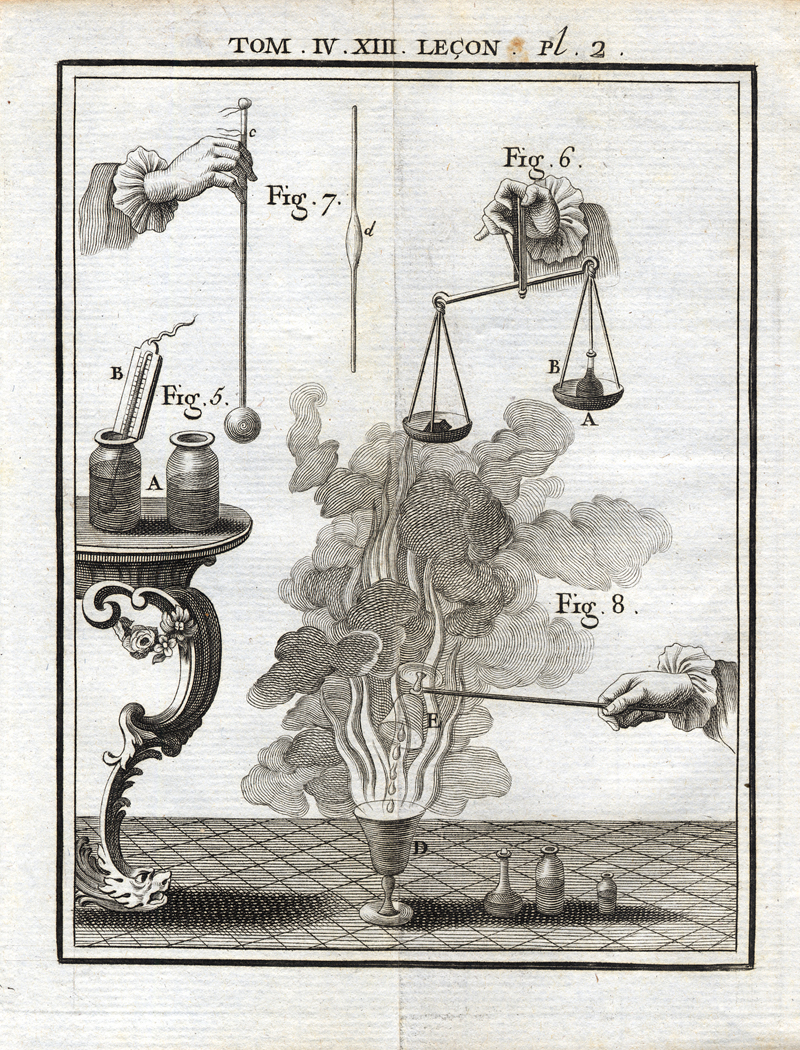
Jean Antoine Nollet: Leçons de Physique expérimentale, 1764, vol. 4
This illustration shows chemical experiments. Figure 5 shows water being mixed with alcohol, resulting in a rise in temperature, release of air, loss of weight (Figure 6), and loss of volume (Figure 7). Figure 8 shows a large beer glass filled with turpentine being mixed with nitre and oil of vitriol. The resulting reaction belches out smoke and is ignited with a great flame, releasing a pleasant aroma.
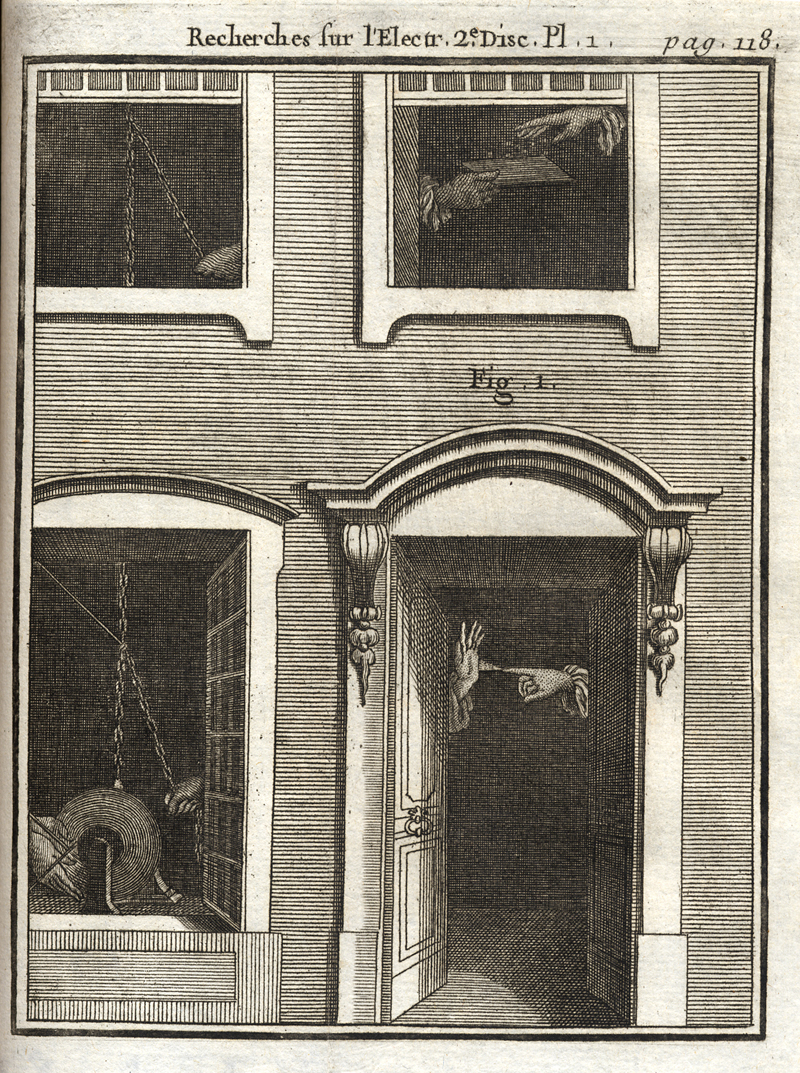
Jean Antoine Nollet: Recherches sur les causes particulieres des phénoménes électriques, 1753
This illustration shows a house where electrical experiments are performed. The opened door invites spectators to experience electricity with their senses, revealing a darkened room where the sparks of electricity can be seen. Static electricity was generated by a friction machine or by rubbing a glass globe or disc, as is seen in the left lower window. The electricity is conducted via chains to the floor above where experiments are performed.
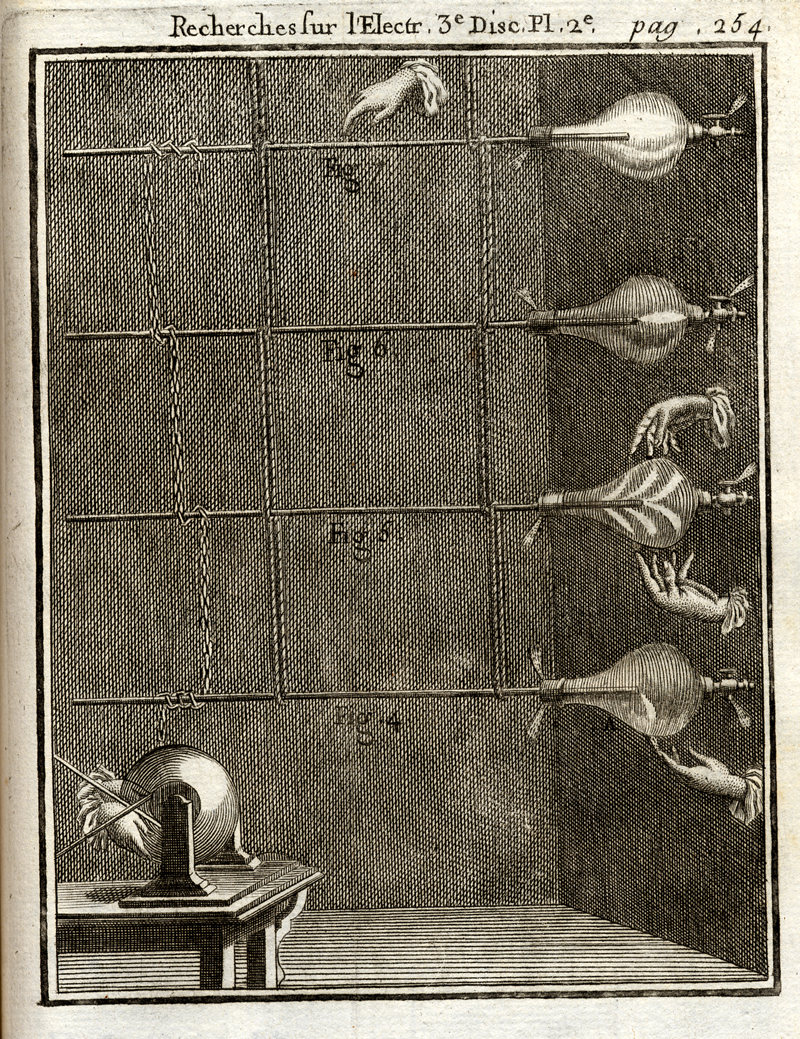
Jean Antoine Nollet: Recherches sur les causes particulieres des phénoménes électriques, 1753
Static electricity is generated in the lower left hand corner, and conducted via chains aurora flasks, glass bulbs with a brass spike in the middle. The flasks were evacuated with an air pump and then charged to cause the appearance of an electric globe which would follow the movements of the demonstrator’s fingers.
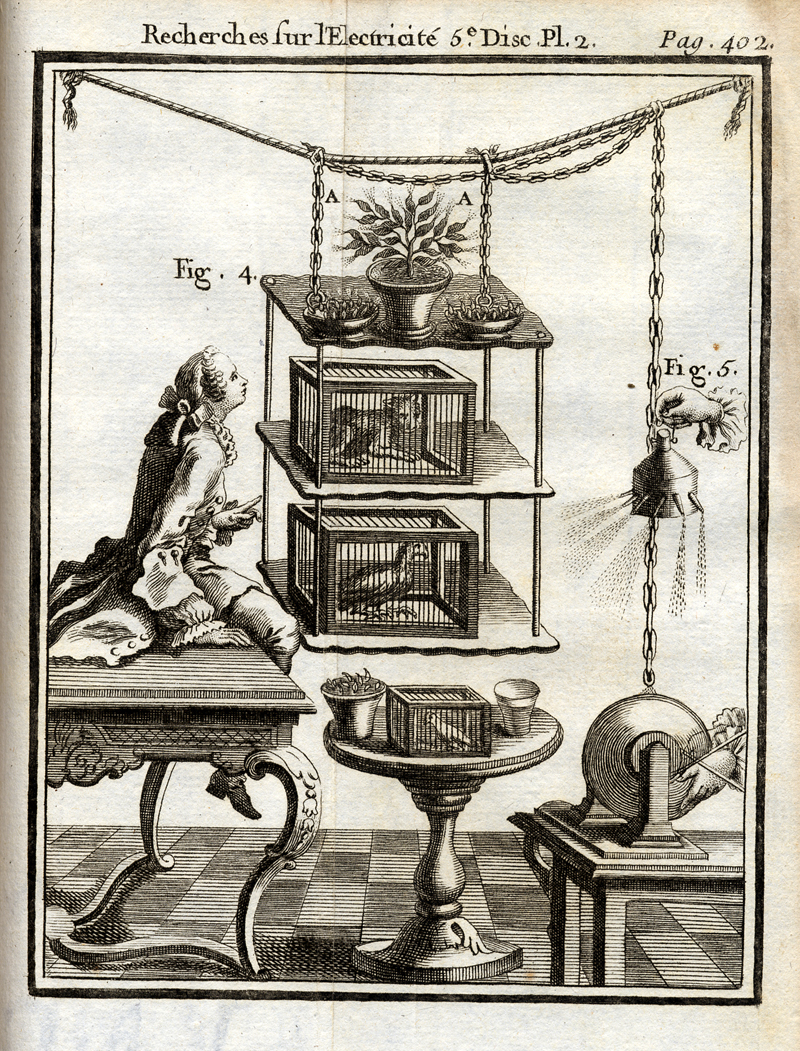
Jean Antoine Nollet: Recherches sur les causes particulieres des phénoménes électriques, 1753
Static electricity is being generated in the bottom right of the picture here by the friction of a bare hand on a glass globe. The electricity was then conducted by chains to different bodies, and often the audience could participate in the demonstration. This illustration shows experiments on plants and animals.
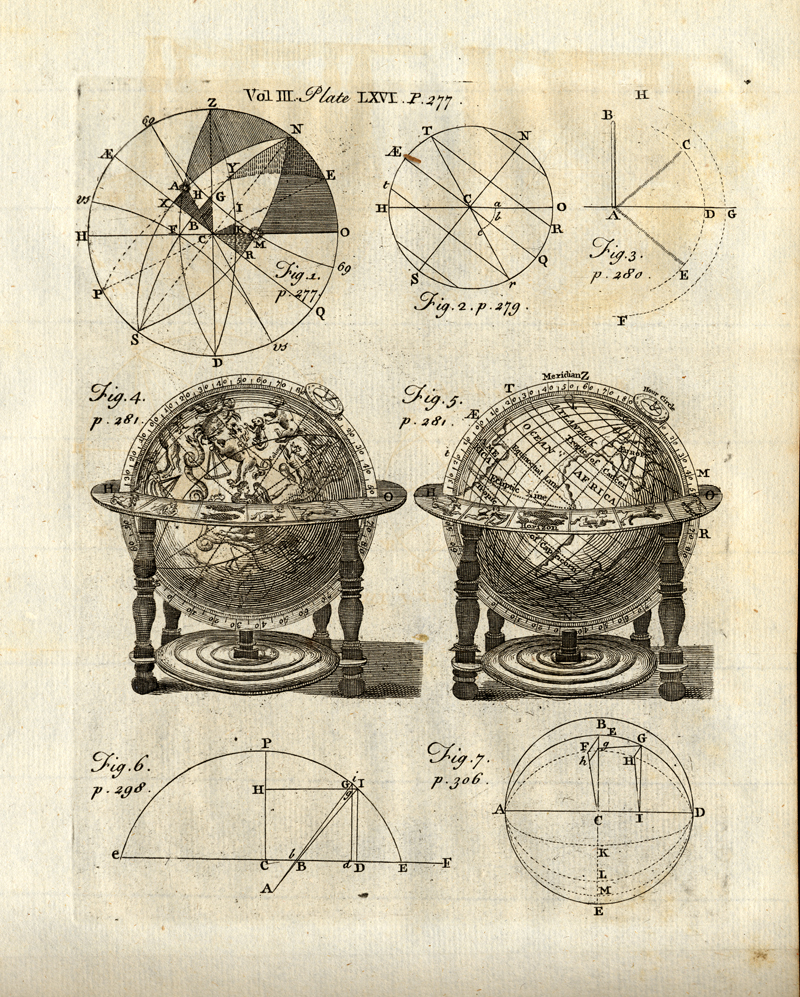
Benjamin Martin (1704?-1782): Philosophia Britannica: or A New and comprehensive System of the Newtonian Philosophy, Astronomy and Geography in a course of twelve lectures, 1759, vol. 3
The demonstration of terrestrial and celestial globes were used to make principles of geography, astronomy and geometry visible for the audience.

John Theophilus Desaguliers (1683-1744): A Course of Experimental Philosophy, 1734, vol. 1
The orrery or planetarium would model the motions of the planets.
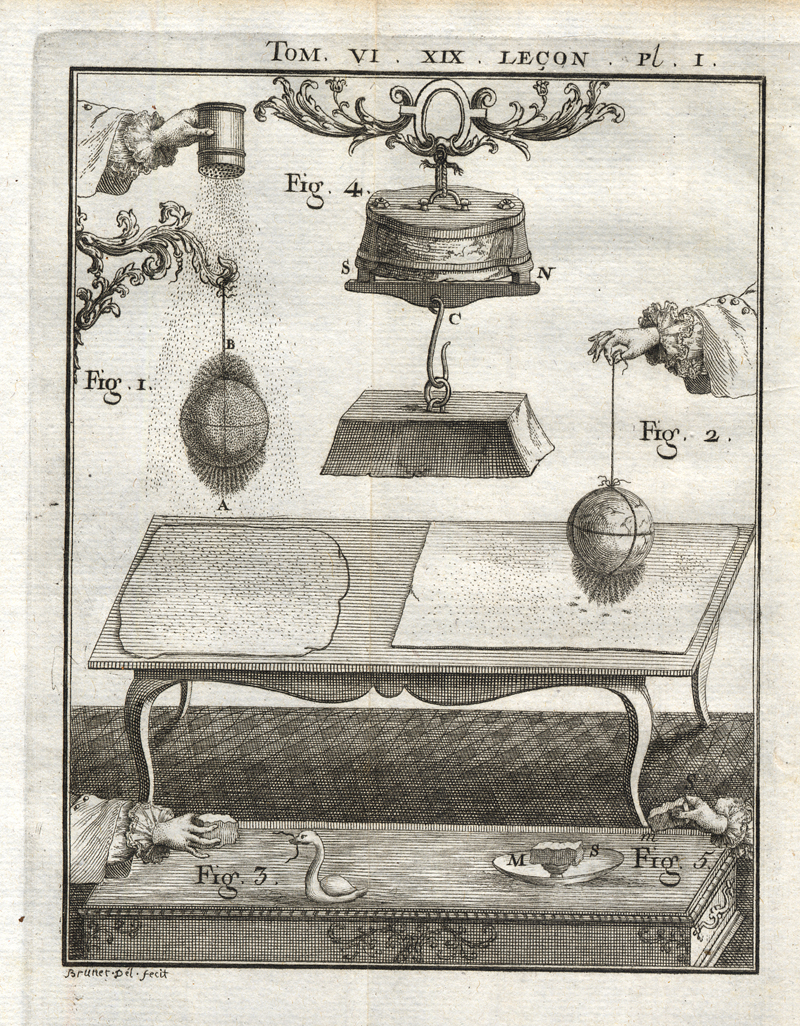
Jean Antoine Nollet: Leçons de Physique expérimentale, 1764, vol. 6
Magnetism was a popular subject in experimental philosophy, and lodestones often formed part of a demonstrator’s cabinet of equipment. A particular sumptuous – and large – example of a lodestone is this one in the Museum’s collection.
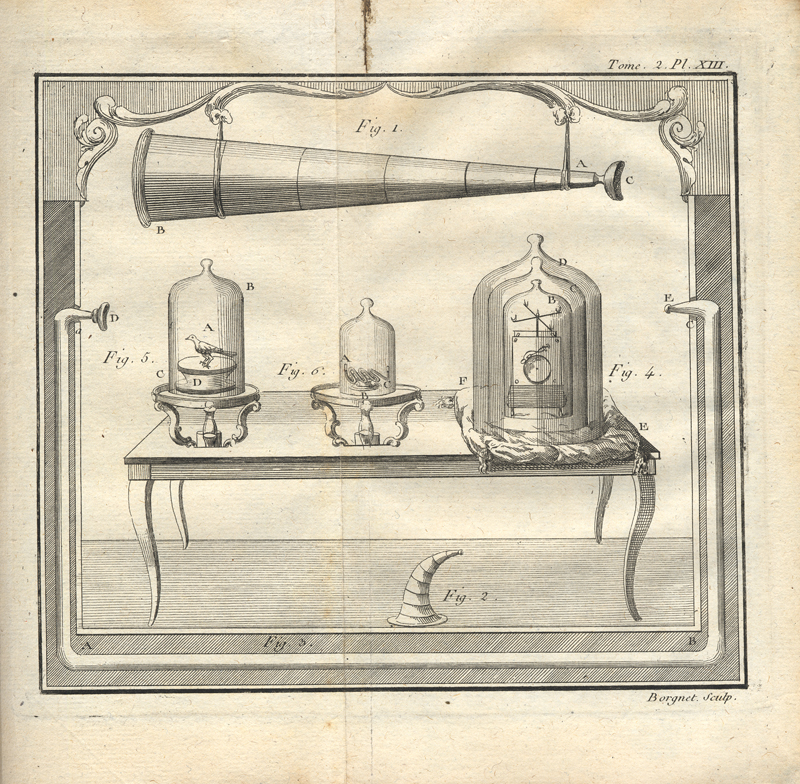
Joseph Aignan Sigaud de la Fond: Description et usage d’un Cabinet de Physique Experimentale, 1775, vol. 2
Some instruments demonstrated acoustics. This illustration shows funnels which transmit and modify sound, and how sound from a bell is muted by bell jars. The author also suggests an experiment (Figure 5) in which a bird is placed under a bell jar and the air is evacuated with an air pump. This demonstrates the importance of air for breathing. The text describes how the bird first finds it difficult to breathe, then convulses, and finally perishes.
